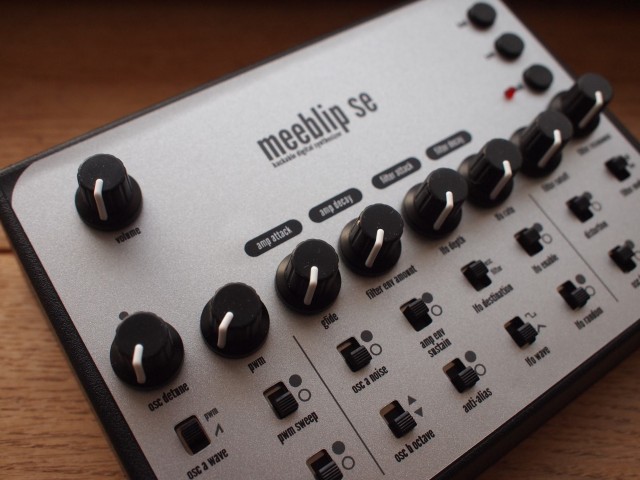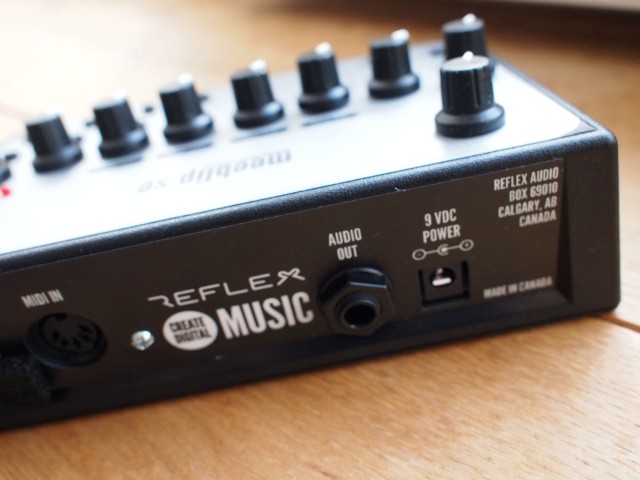The original vision of the MeeBlip was to make something affordable, something open and hackable, something anyone could get, something that could tell a story, and something we’d use to make some music. And since those are all goals of Create Digital Music, too, it’s a perfect physical compliment to what we do. For me, personally, it means putting my money where my (blogging) mouth is. It’s a chance to learn.
So that makes this a really special week. It hasn’t been easy getting here, but now the MeeBlip begins its second chapter.
This week, we’re announcing availability of the MeeBlip SE. US$139 (intro price) buys you a version you can put together in a few minutes with just a screwdriver, a complete, MIDI-capable digital hardware synth. (We ship most places worldwide – and we’re shipping now.) Through incredible work by the MeeBlip’s principal designer, Canadian James Grahame, the SE revises our original design:
- It’s more playable. With lots of feedback from users (and extended chats with Francis Preve of Keyboard Magazine and Academik Records), we made the control layout more logical and more fun to play.
- It’s got a greater sonic range. Anti-aliasing on/off, and a variable pulse width knob combine with more unusual features like its digital distortion and intentionally-quirky digital filter.
- Everything responds to MIDI. If there’s a knob or switch on the front panel, there’s a MIDI parameter – and vice versa. Whether you use your hand or a MIDI message, everything is accessible.
- It stores patches. 16 patch slots accessible from the front panel mean you can use your favorite sounds live, and you can store them somewhere other than your brain.
And you can get one right now. (MeeBlip SE, and for DIYers, either the SE Build Everything version or the compact micro board.)
But, of course, as we learned how to make the synth better, we learned a lot more about how to make the business of making a synth better. Learning is wonderful: I’ve been floored by seeing what people have done with these instruments, by seeing them pop up in unexpected places and making brilliant, unexpected sounds. Learning is also painful. We made some mistakes, as demand for the MeeBlip went beyond what we expected, and the limitations of the chip we chose made developing our more ambitious ideas take longer than we wanted.
In other words, users have been incredibly inspiring – reality has sometimes been incredibly challenging – and those are the two things that have moved us forward.
So, it’s now a daily task to work on ways of making the MeeBlip more accessible, more available, and better.
While we work on that, you can now find all of our schematics and code – including many, many hours of James’ work, in particular – on GitHub. Axel Werner, a programmer in our community, has already contributed to making that code better, so when you play a MeeBlip, you’re playing some of his work, too. (The lesson of open source: if just one person does something with what you share, it’s already worth it. And Axel’s not alone.)
I’m working mainly on documentation – both for users just wanting to make music (even if this is their first synth), and developers who want to learn about code and sound.
You can learn about the MeeBlip, read those new docs as they’re added, keep up with the latest, and – if you like – buy the new MeeBlip SE as a kit or quick-build synth – at the synth’s site:
Let’s Get Some Music in Here
I can’t talk about the MeeBlip nearly as well as its users can show it.
Case in point: we didn’t know one Jeremy Leaird-Koch until the video above popped in our inbox. It’s a demo video of the MeeBlip SE, and it shows off all the new sonic features of the instrument, and demonstrates the PWM width functionality, and shows how to make music, and does a timelapse of building the kit from scratch. Here’s the funny part: we didn’t ask him to do this. His demo video puts anything we’d make to shame.
Jeremy’s story behind this, and the reason there are two MeeBlips in there, was even more amazing. He wrote us about a month ago:
My boyfriend and I had put off exchanging Christmas gifts because I was waiting for the MeeBlip kit (his present) to arrive. Finally, about a week or so after XMAS, it came, I wrapped it up, and gave it to him. I unwrap his present to me, and it’s in a Canada Post box, too. Turns out we got each other the exact same thing. Two MeeBlip kits. Absolutely hilarious.
Anyways, the next day we built them up and played around with them. We also made this little video documenting one of the builds and our first explorations of what it could do. Damn, what a fun little box.
I nearly cried – well, for two reasons. One was, it was a clear explanation of why you go nuts trying to make a synth. The other was, we really screwed up shipping in 2011, and if anything told me to never let that happen again, this story did. We’ve changed the way we source parts, the way we assemble the MeeBlip, and the way we distribute it, and it’s one of the things I think about every morning when I wake up. But thanks, Jeremy and your boyfriend; you’ve absolutely inspired us.
And most importantly, I want to hear more music, made on whatever thing you choose, because I really enjoyed it. And that’s what this is all about.
Side note: if you like soldering, you want the MeeBlip Build Everything kit for intro US$119, which is what he has here. If you don’t, don’t let this scare you; you can get the Quick Build and just use a screwdriver, and it doesn’t take a whole lot longer than this does in fast-forward timelapse time.

